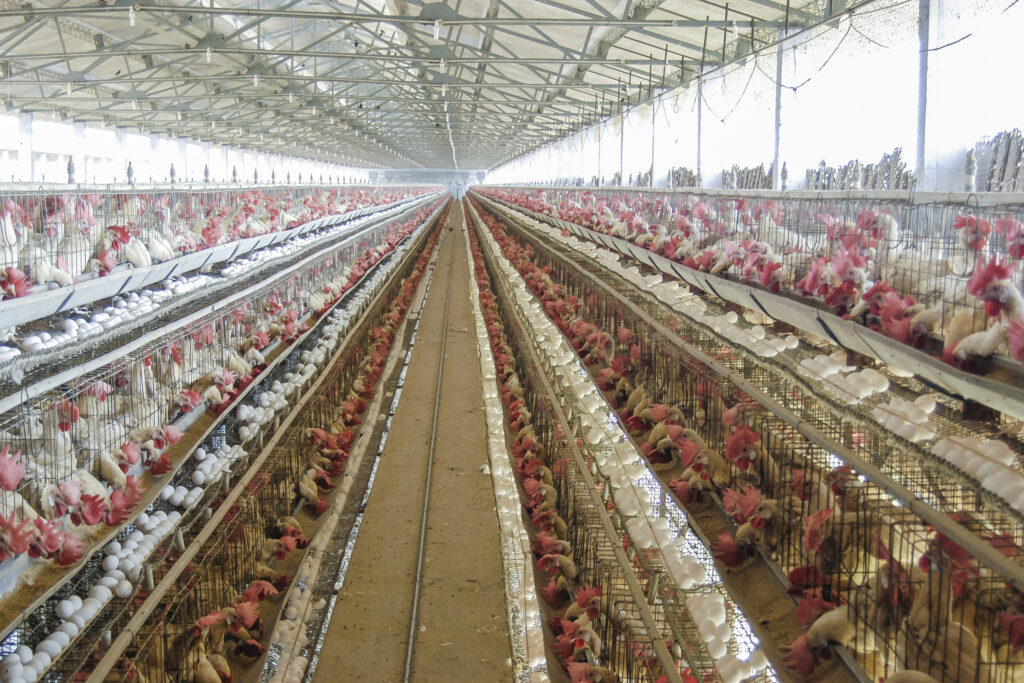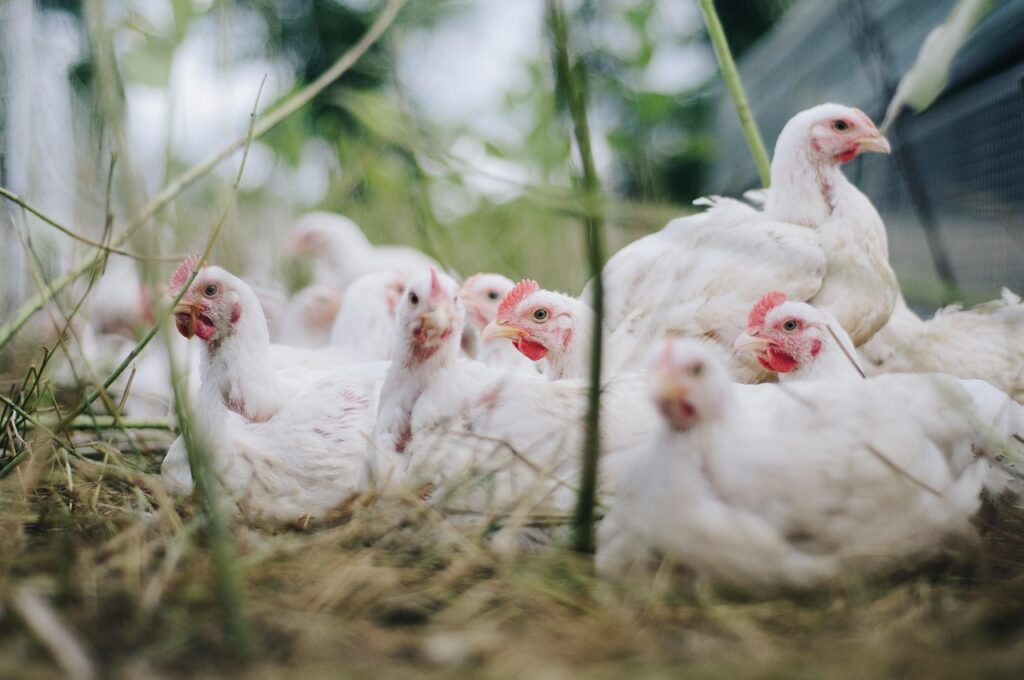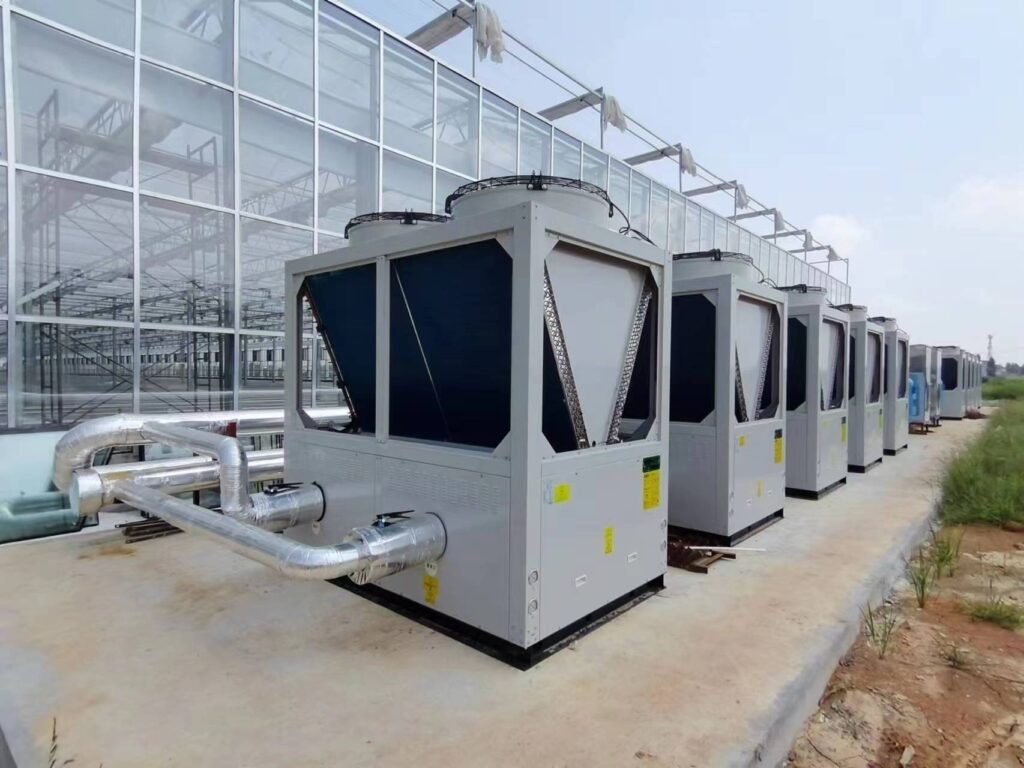Our Solutions for Poultry Applications
Heat pump systems can be highly beneficial for poultry farming by providing efficient heating and cooling solutions. Here are some key points about using heat pumps in poultry farming


- Energy Efficiency:
- Heat pumps are known for their high energy efficiency compared to traditional heating systems. They can provide heating or cooling by transferring heat rather than generating it through combustion, which can significantly reduce energy costs.
- Temperature Control:
- Maintaining the right temperature is crucial in poultry farming for the health and productivity of the birds. Heat pumps can offer precise temperature control, ensuring optimal conditions are maintained throughout the year.
- Environmental Impact:
- Heat pumps use electricity, which can be sourced from renewable energy, thus reducing the carbon footprint of the poultry farm compared to fossil fuel-based heating systems.
- Improved Air Quality:
- Heat pumps can also improve air quality by providing better ventilation and humidity control. Proper ventilation reduces the risk of respiratory problems in poultry.
- Versatility:
- Heat pumps can be used for both heating and cooling, making them versatile for year-round use in varying climatic conditions.
Types of Heat Pumps
- Air-Source Heat Pumps:
- These extract heat from the outside air and can be used effectively in moderate climates. They are relatively easy to install and can provide both heating and cooling.
- Ground-Source Heat Pumps:
- Also known as geothermal heat pumps, these extract heat from the ground. They are more efficient than air-source heat pumps but have higher installation costs due to the need for ground loops.
- Water-Source Heat Pumps:
- These use water bodies such as lakes, ponds, or wells as a heat source. They are efficient and can be a good option if there is a suitable water source available near the poultry farm.
Implementation Considerations
- Initial Costs:
- The installation of heat pump systems can be expensive, particularly for ground-source and water-source systems. However, the long-term savings on energy bills and maintenance can offset these initial costs.
- Maintenance:
- Regular maintenance is crucial to ensure the heat pump operates efficiently. This includes checking refrigerant levels, inspecting and cleaning coils, and ensuring that fans and filters are clean.
- Sizing and Design:
- Proper sizing and design of the heat pump system are essential to meet the specific needs of the poultry farm. An undersized system may not provide adequate heating or cooling, while an oversized system can lead to inefficiencies and higher costs.
- Integration with Existing Systems:
- Integrating the heat pump with existing heating and cooling systems can enhance overall efficiency. This might include using heat recovery systems or combining with solar panels for a hybrid solution.

FAQs
An industrial heat pump is a device that transfers heat from a lower temperature source to a higher temperature sink using mechanical work. They are designed for large-scale applications in various industries to improve energy efficiency and reduce greenhouse gas emissions.
Industrial heat pumps operate on the same principles as residential heat pumps, utilizing the refrigeration cycle. They absorb heat from a source (e.g., waste heat, ambient air, or water) and then compress the refrigerant to increase its temperature before releasing the heat to a desired process or space.
- Air-source heat pumps: Extract heat from the air.
- Water-source heat pumps: Use water bodies as a heat source.
- Ground-source heat pumps: Utilize geothermal energy.
- Mechanical vapor recompression (MVR): Recovers and compresses vapor for reuse in industrial processes
- Energy efficiency: Reduces energy consumption by recycling waste heat.
- Cost savings: Lower operational costs due to improved energy use.
- Environmental impact: Decreases greenhouse gas emissions.
- Versatility: Can be applied in various industries like food processing, chemical production, and manufacturing.
- Food and beverage industry
- Farming, livestock and poultry
- Chemical and pharmaceutical industry
- Pulp and paper industry
- Automotive and aerospace manufacturing
- Textile and laundry services
- Temperature range: The required heating and cooling temperatures.
- Heat source: Availability and type of heat source.
- Capacity: The heat pump’s capacity to meet industrial demands.
- Efficiency: Coefficient of Performance (COP) and Seasonal Performance .
- Installation and maintenance costs: Initial investment and long-term maintenance expenses.
- Environmental regulations:** Compliance with local and international environmental standards.
The Coefficient of Performance (COP) is a measure of a heat pump’s efficiency, defined as the ratio of useful heating or cooling provided to the work required. A higher COP indicates a more efficient heat pump.
Industrial heat pumps enhance sustainability by improving energy efficiency, reducing the reliance on fossil fuels, and lowering greenhouse gas emissions through the effective reuse of waste heat.
- Improved refrigerants: Development of eco-friendly refrigerants with lower global warming potential (GWP).
- Enhanced materials: Use of advanced materials for better efficiency and durability.
- Integration with renewable energy: Combining heat pumps with solar or wind power for greater sustainability.
- Smart controls: Implementation of IoT and AI for better monitoring and control.
We here to help you select the right solution for your business and we are happy to answer all your question. please, contact us.
